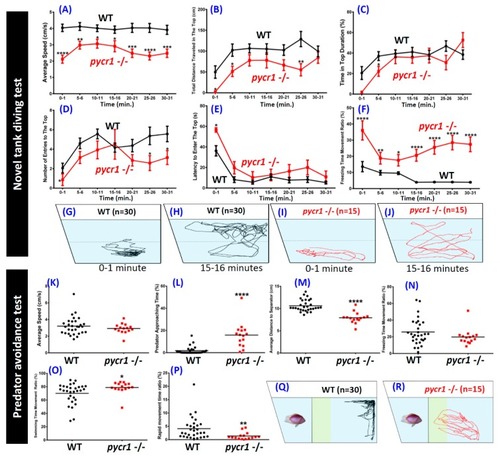Figure 4
- ID
- ZDB-FIG-190723-249
- Publication
- Liang et al., 2019 - Zebrafish Carrying pycr1 Gene Deficiency Display Aging and Multiple Behavioral Abnormalities
- Other Figures
- All Figure Page
- Back to All Figure Page
|
Comparison of behavioral endpoints in novel tank exposure test and predator avoidance test in wild type and |
| Fish: | |
|---|---|
| Observed In: | |
| Stage: | Adult |

